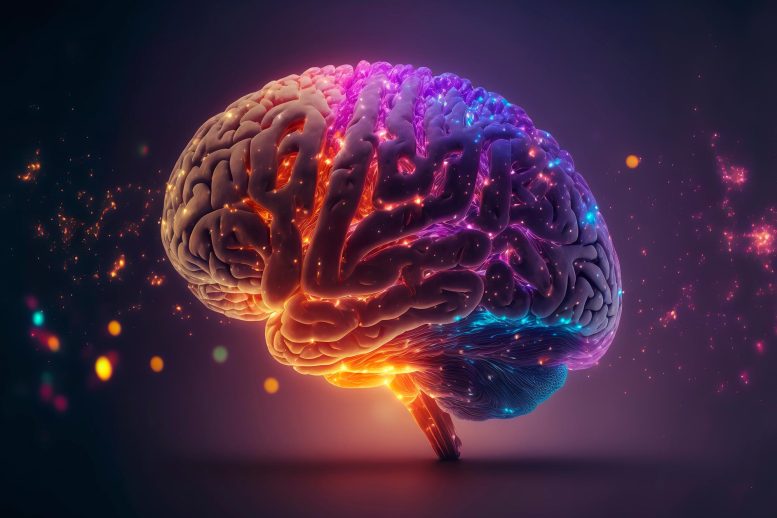
Penn State researchers discovered that blocking the enzyme HDAC3 improves memory updating in older mice, potentially offering new treatment avenues for age-related cognitive decline and memory disorders such as Alzheimer’s disease.
As we age, occasional forgetfulness becomes more common. However, it’s not just about struggling to recall new information—older adults also find it challenging to update existing memories when new details arise. Yet, little is known about the mechanisms behind memory updating and how those mechanisms go awry with age.
A team of researchers from Penn State has identified an enzyme that contributes to age-related impairments in memory updating. When blocked, older mice were better able to incorporate new information and performed similarly to their younger counterparts. The researchers said the findings, which were published in Frontiers in Molecular Neuroscience, may lead to the development of potential therapeutic targets for improving cognitive flexibility in old age.
“It’s important to understand what’s happening at a molecular level during a memory update because, as humans, most of our memories are updates. We’re constantly building on things we already know and modifying existing memories,” said Janine Kwapis, assistant professor of biology and senior author of the paper. “But no one has really looked to see if the mechanisms behind memory formation and memory updating are identical or if they are unique for memory updating. This is a step forward in figuring that out.”
The Science of Memory Consolidation and Reconsolidation
When a memory forms, the brain rewires itself to keep that memory in place through a process called consolidation. Cells express proteins at the synapse, the gap between neurons that allows communication between nerve cells, linking together the cells activated when the memory formed. When the memory is recalled, those cells then fire together at the same time.
“When you’re presented with new information, you have to bring that existing memory out of storage and weaken it so it’s ready to take on new information. Once the new information is learned and those new neurons are incorporated, the updated memory is solidified and stored again,” Kwapis said. Kwapis noted that this process, called reconsolidation, becomes less effective with age.
In this study, the research team wanted to understand why it’s harder to update memories with normal aging. If they could enhance gene expression during reconsolidation, could they enhance the memory update too?
To test this, they blocked histone deacetylase 3 (HDAC3), an enzyme that regulates gene transcription, the process of copying information from a DNA segment into RNA that will ultimately make a functional protein. HDAC3 has been shown to negatively affect memory formation and gene expression during consolidation but the researchers said its role in memory reconsolidation wasn’t previously studied.
“HDAC3 typically tightens up the chromatin, a complex of DNA and proteins, and makes it hard for transcription to happen,” said Chad Smies, a doctoral student in biology and first author of the paper. “If we block this enzymatic activity from happening, it may help maintain a more open chromatin state and improve gene expression.”
When HDAC3 was blocked during the memory reconsolidation phase, it prevented the typical age-related deficits in memory updating. Older mice performed as well as their younger counterparts during a memory update task.
Experimental Methods and Implications
The team used a methodology called the objects in updated locations paradigm, which Kwapis developed specifically to test memory updating. It includes three phases: a training session where mice learn two locations of identical objects; an update session where one of the objects is moved to a new location; and a test session where the objects are placed in four separate locations — the original two training locations, the updated location, and a completely novel location.
“Mice like novelty so if they have good memory for the training session or the update session, they’ll explore the novel object location more,” Smies said. “But if they have poor memory, they tend to explore the previously learned locations equally as the new location.”
By identifying molecular mechanisms like HDAC3, the research team said they hope to provide potential therapeutic targets for improving cognitive flexibility in old age.
“If these mechanisms improve memory in normal aging, they could potentially help with conditions like Alzheimer’s disease and dementia too,” Kwapis said.
Reference: “Pharmacological HDAC3 inhibition alters memory updating in young and old male mice” by Chad W. Smies, Lauren Bellfy, Destiny S. Wright, Sofia S. Bennetts, Mark W. Urban, Chad A. Brunswick, Guanhua Shu and Janine L. Kwapis, 17 June 2024, Frontiers in Molecular Neuroscience.
DOI: 10.3389/fnmol.2024.1429880
Other Penn State authors on the paper include Lauren Bellfy, doctoral student in the molecular, cellular and integrative biosciences, and Chad Brunswick, a doctoral student in the neuroscience program. Destiny Wright and Sofia Bennetts, who were undergraduate students at Penn State during the time of the research; Mark Urban, a postdoctoral scholar at Penn State during the time of the research; and Guanhua Shu, who was a graduate student at Harvard University at the time of the research, also contributed to the paper.
Funding from the National Institute on Aging, Hevolution/American Federation for Aging Research, and the Penn State Paul Berg Early Career Professorship funded this research.